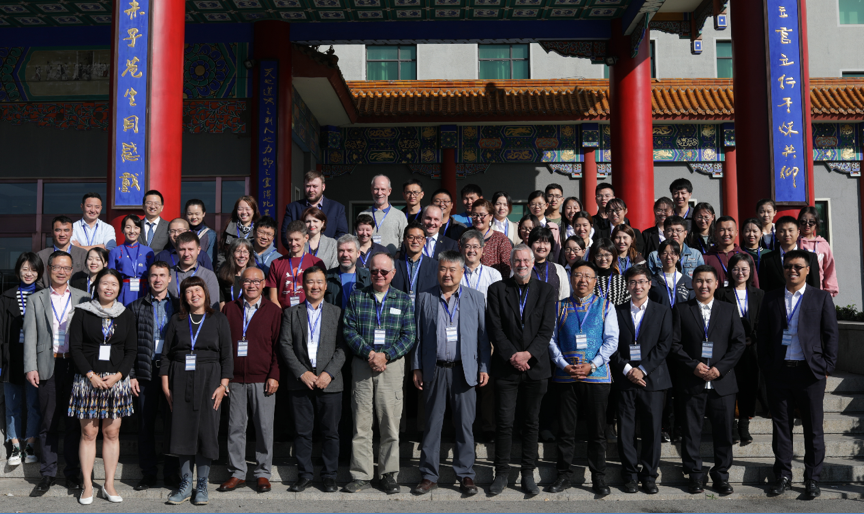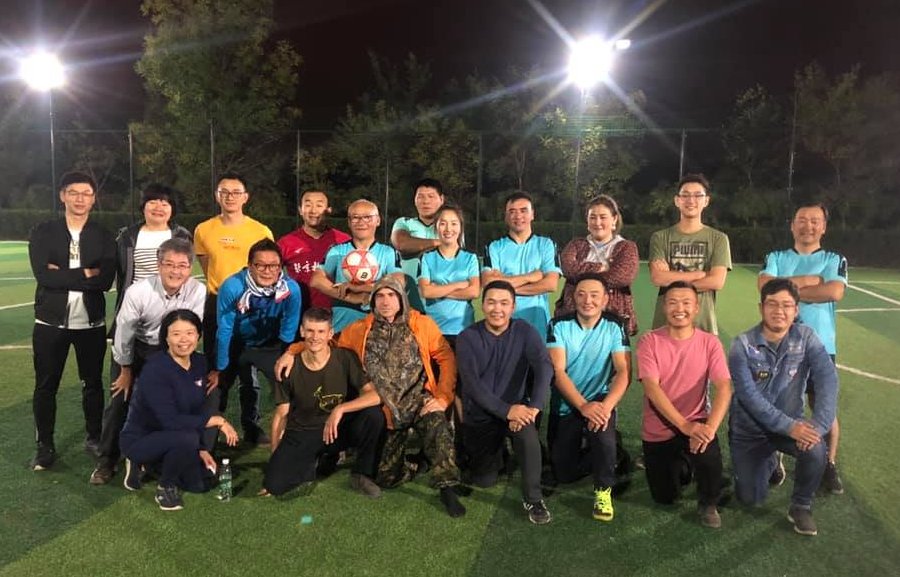
The Second International Symposium on Developing Effective Coordinated Monitoring of East Asia Waterbirds in the 21st Century was held in Changping, Beijing, China, just outside Beijing from 14-18th October. The symposium was hosted by the EAAFP Anatidae Working Group and organized by the State Key Laboratory of Urban and Regional Ecology, Research Center for Eco-Environmental Sciences, Chinese Academy of Sciences.
The Chair of the Anatidae WG, Dr. Kurechi was unable to open the meeting, having broken his leg
following a fall from the mountainside rice paddies in Philippines. We all wish him a speedy recovery! WG Coordinator Katsumi Ushiyama introduced the meeting and Professor Cao Lei provided a comprehensive overview of the hugely impressive work that she, her students and collaborators have put into their winter surveys of large-bodied birds in the Yangtze River floodplain. Poyang Lake is taking on greater importance for cranes, storks and Anatidae as its inundation cycle provides feeding grounds for many species at the same time as other wetlands are facing ongoing challenges.
Across East Asia, Prof. Cao Lei’s group has deployed over 2600 trackers on 56 different species, showing the dramatic concentration of migratory waterbirds from the Russian Arctic from Yamal to Chukotka, the Russian taiga zone and the Mongolian steppe which funnel down to winter in China, primarily in the Yangtze River Floodplain. The data collected by these devices has enabled them to delineate the different flyways in Eurasia for many waterfowl populations about which we knew very little prior to this work. It builds the basis for effective monitoring, through the continued development of the count system.
The Symposium was also the venue for a series of breakout workshops that focused on collating information on the linkage between breeding, moulting, staging and wintering areas for 11 key species (Tundra, Whooper and Mute Swans, Bean, Greater White-fronted, Lesser White-fronted, Greylag, Swan, Aleutian Canada and Brent Geese, and Falcated Duck). Participants, largely from the countries of Northeast Asia, provided technical information to refine the boundaries of population flyways and estimate population sizes and trends. Core information was summarized through a series of presentations, followed by group discussions on individual populations, with a view to publishing the results from these workshops in a series of species profiles in a special issue of the journal Wildfowl commissioned for publication during 2020. The extensive depth of knowledge of species and sites from the expert participants at the Symposium added significantly to refining this information.
The symposium was completed by daily lectures on various aspects of monitoring, migration, ecology and conservation by experts, including the Chairs of EAAFP Task Forces on Baer’s Pochard (Dr. Ding Changqing), Dalmatian Pelican (Dr. Nyamba Batbayar) and Coordinator of the Scaly-sided Merganser TF (Dr. Diana Solovyeva).
Other highlights from the meeting included the proposed waterfowl survey of the eastern Russian Arctic in 2019/20, primarily for Black Brant, Emperor Goose, Spectacled and Steller’s Eider that will replicate a survey undertaken in 1993-95. We heard about the impressive network of waterfowl conservation zones (including bans or limits on hunting) in Russia’s Yamal-Nenets region, which could be a model for implementation in the Russian Far East. Finally, the UNDP-GEF restoration on Shengjin Lake in the lower Yangtze is encouragingly bring large numbers of Swan Geese back to the site after many winters of absence. It was especially encouraging to see so many young people giving excellent presentations during the meeting.
Looking forward, the Anatidae WG will follow up with the action plans for the 11 priority species, consider how to advance action plans for additional species, principally ducks, including diving ducks and Garganey and develop Conservation Status Reviews.
Many thanks to the organizers of a very productive symposium covering so much ground and bringing together new and valuable information.


Anatidae Cup – an international football match for refreshment!





Comment(1)-

Spike says
November 1, 2019 at 12:25 amWho won the football?
Mongolian Plovers vs Chinese Mergansers?
Or Siberian Cranes vs Japanese Murrelets?